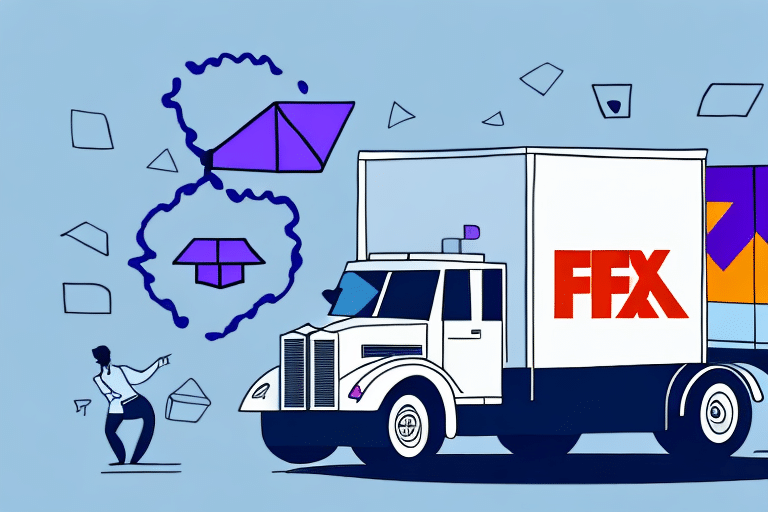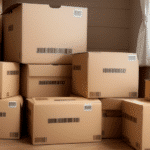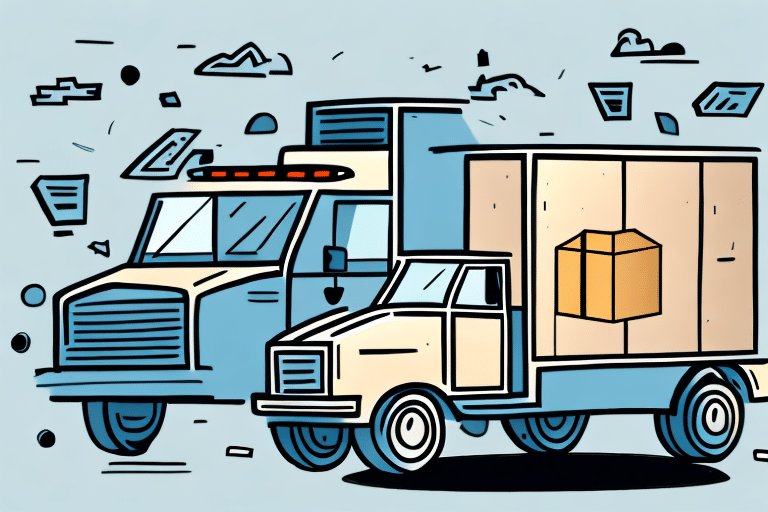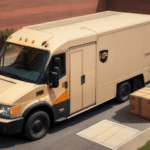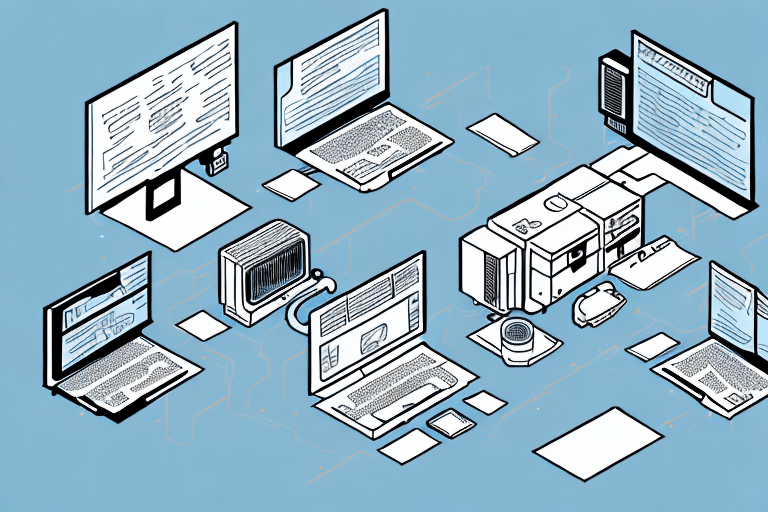Understanding Common Causes of Failed FedEx Deliveries
Despite FedEx's reputation for reliability, there are instances where deliveries do not go as planned. Understanding the common reasons behind these failed deliveries can help both senders and recipients take proactive measures to ensure successful package delivery.
Inaccurate Shipping Information
One of the leading causes of failed deliveries is incorrect or incomplete shipping information. Errors such as misspelled addresses, missing apartment or suite numbers, and incorrect recipient names can prevent FedEx from delivering packages successfully. According to the FedEx Customer Support, addressing inaccuracies account for approximately 30% of delivery issues.
To minimize this risk:
- Double-check Address Details: Ensure that the street address, city, state, and ZIP code are correct.
- Include Complete Recipient Information: Add apartment or suite numbers and verify the recipient’s full name.
- Provide a Valid Contact Number: A reachable phone number allows FedEx to clarify any uncertainties during delivery.
Improper Packaging
Proper packaging is crucial for the safe transit of your items. Inadequate packaging can lead to damaged goods or make it difficult for FedEx personnel to handle the package correctly.
Key packaging practices include:
- Use Sturdy Boxes: Choose boxes that can withstand the weight and movement during shipping.
- Secure Contents: Utilize materials like bubble wrap, packing peanuts, or foam inserts to cushion items.
- Seal Packages Properly: Reinforce seams with strong tape to prevent packages from opening during transit.
According to the Inbound Logistics, proper packaging can reduce damage-related delivery issues by up to 25%.
Weather and Environmental Factors
Adverse weather conditions such as snowstorms, hurricanes, and heavy rainfall can disrupt delivery schedules. These conditions may lead to delays or rescheduling of deliveries to ensure the safety of FedEx drivers and the integrity of the packages.
FedEx implements several strategies to mitigate weather-related disruptions:
- Route Optimization: Adjusting delivery routes in real-time based on weather forecasts.
- Temperature-Controlled Facilities: Holding sensitive packages in climate-controlled environments during extreme temperatures.
- Advanced Tracking: Providing customers with updated tracking information to monitor their deliveries.
For real-time updates on delivery status during severe weather, customers can use the FedEx Tracking Tool.
Address Errors
Even minor errors in the delivery address can lead to significant delays or failed deliveries. Common address errors include incorrect ZIP codes, outdated street names, or missing information.
To prevent address-related issues:
- Verify Address with Recipient: Confirm the delivery address with the intended recipient before shipping.
- Use Address Verification Tools: Utilize online tools or software to validate addresses during the shipping process.
- Update Address Records: Ensure that any changes to the recipient’s address are promptly updated in your records.
Preventing Delivery Failures
Proactive measures can significantly reduce the likelihood of failed FedEx deliveries. By focusing on accurate information and proper packaging, both senders and recipients can facilitate smoother delivery experiences.
Ensuring Accurate Shipping Details
Accurate shipping details are the cornerstone of successful deliveries. Double-checking all information before dispatching a package can prevent many common delivery issues.
- Complete Address: Ensure that every part of the address is included and correctly spelled.
- Recipient Information: Provide the full name and a working phone number of the recipient.
- Use Clear Labels: Clearly label packages with both sender and recipient information to avoid confusion.
Proper Packaging Techniques
Proper packaging not only protects the contents but also ensures that the package can be handled efficiently during transit.
- Choose the Right Box Size: Select a box that fits the items snugly to prevent movement.
- Protect Fragile Items: Use additional cushioning materials for items prone to breaking.
- Secure Seals: Use high-quality tape to seal all openings securely.
Address Verification
Utilizing address verification services can help identify and correct mistakes before shipping. Many shipping platforms integrate address verification tools to facilitate this process.
For example, the USPS Address Information API allows businesses to validate addresses in real-time.
Addressing Delivery Delays
Delivery delays can be frustrating, but understanding the underlying causes can help in mitigating their impact.
Causes of Delays
Several factors can contribute to delivery delays, including:
- High Volume Seasons: Peak shopping seasons like holidays can overwhelm shipping networks.
- Customs Clearance: International shipments may experience delays due to customs processing.
- Traffic Congestion: Unexpected traffic conditions can slow down delivery schedules.
- Operational Issues: Technical glitches or staffing shortages can impact delivery times.
According to a report by UPS, holiday season delivery delays increase by approximately 15% compared to non-peak periods.
How to Mitigate Delays
Implementing strategies to anticipate and address potential delays can enhance delivery efficiency:
- Plan Ahead: Schedule shipments well in advance during peak times.
- Choose Expedited Shipping: Opt for faster shipping options to ensure timely delivery.
- Track Your Package: Use tracking tools to monitor your shipment’s progress and receive real-time updates.
- Communicate with Recipient: Keep the recipient informed about potential delays and alternative delivery options.
What to Do If Your Delivery Fails
If a FedEx delivery fails, there are specific steps you can take to locate your package and resolve the issue promptly.
Locating a Missing Package
If your package hasn't arrived within the expected timeframe, follow these steps:
- Check Tracking Information: Visit the FedEx Tracking Tool to view the latest status of your shipment.
- Contact FedEx Customer Service: Reach out to FedEx support for assistance in locating your package.
- Verify with Neighbors: Sometimes packages are delivered to nearby addresses by mistake.
Filing a Claim
If your package is confirmed as lost or damaged, you can file a claim with FedEx for compensation.
- Gather Documentation: Collect receipts, tracking information, and photographs of any damage.
- Submit the Claim: Visit the FedEx Claims Portal to file your claim online.
- Follow Up: Keep track of your claim status and provide any additional information if requested.
Understanding Your Rights
Consumers have specific rights regarding failed deliveries, which vary based on the service type and shipping terms. It's essential to familiarize yourself with FedEx’s policies to understand the extent of available compensation.
For detailed information, refer to FedEx’s Shipping Rights page.
The Role of Technology in Enhancing Delivery Success
FedEx leverages advanced technologies to improve delivery accuracy, efficiency, and customer satisfaction. These technological advancements play a pivotal role in reducing failed deliveries.
Advanced Tracking Systems
FedEx’s tracking systems provide real-time updates on package status and location. Customers can monitor their shipments through the FedEx website or mobile app, allowing for timely interventions if issues arise.
Features include:
- Real-Time Location Tracking: View the exact location of your package at any given time.
- Estimated Delivery Times: Receive accurate delivery windows based on current transit conditions.
- Delivery Notifications: Get alerts via email or text about your package’s progress.
Route Optimization
FedEx utilizes sophisticated route-planning algorithms to determine the most efficient delivery paths. This optimization reduces transit times, minimizes fuel consumption, and decreases the likelihood of delays.
According to a study by ScienceDirect, route optimization can improve delivery efficiency by up to 20%.
Automation and Robotics
Automation in sorting facilities and the use of robotics streamline the handling process, reducing human error and speeding up package processing times. Automated systems ensure that packages are correctly sorted and dispatched promptly.
FedEx’s investment in robotics and automation has led to a significant increase in processing capacity, enabling faster and more reliable deliveries.
Best Practices for Receiving Your Package
Properly receiving and inspecting your FedEx delivery can help identify issues promptly and ensure that your items are in good condition.
Inspecting the Package Upon Arrival
When your package arrives, take the following steps to ensure its integrity:
- Check the Packaging: Look for any signs of damage, tampering, or mishandling.
- Verify Contents: Ensure that all items listed in the shipment are present and undamaged.
- Report Issues Immediately: If you notice any damage or missing items, contact FedEx customer service promptly.
Providing Feedback
FedEx values customer feedback as it helps improve service quality. If you experience a failed delivery or any other issue, consider providing feedback through FedEx’s Customer Support.
Filing a Claim for a Failed FedEx Delivery
If your FedEx delivery fails due to loss or damage, you are entitled to file a claim for compensation. The process is straightforward and can be completed online.
Steps to File a Claim
- Visit the FedEx Claims Portal: Navigate to the FedEx Claims Page.
- Enter Shipment Details: Provide the tracking number and other relevant shipment information.
- Submit Supporting Documentation: Upload receipts, photos of damaged items, and any other required evidence.
- Review and Submit: Ensure all information is accurate before submitting your claim.
Understanding Reimbursement
The amount of reimbursement depends on the declared value of the package and the nature of the shipment. It’s important to declare the correct value of your items at the time of shipping to ensure adequate coverage.
For more details on reimbursement policies, refer to FedEx’s Claims and Reimbursements page.
Tips for Avoiding Failed Deliveries in the Future
Implementing best practices can significantly reduce the chances of experiencing failed deliveries in the future.
Regularly Update Shipping Information
Ensure that your shipping and contact information are current. Regularly review and update your address, phone number, and email to prevent delivery issues.
Utilize FedEx Technology
Take advantage of FedEx’s technological tools to enhance delivery success:
- FedEx Mobile App: Manage shipments, track packages, and receive real-time alerts.
- Online Shipping Tools: Simplify shipment preparation and ensure accuracy.
- Smart Labeling: Use clear and accurate labels to facilitate smooth handling.
Ensure Proper Packaging
Adopt robust packaging practices to protect your items:
- Use Quality Materials: Invest in sturdy boxes and protective cushioning.
- Double-Box Fragile Items: For highly fragile items, consider double-boxing for added protection.
- Clearly Label Packages: Indicate if items are fragile or require special handling.
Confirm Complete Address Details
Accurate and complete address information is essential:
- Include ZIP+4 Codes: Using the full ZIP code can enhance delivery accuracy.
- Verify Address with Recipient: Confirm the address details with the recipient before shipping.
- Avoid Assumptions: Never assume based on previous shipments; always verify current address information.
Select Appropriate Shipping Options
Choose shipping options that align with your delivery needs:
- Expedited Shipping: For time-sensitive deliveries, opt for faster shipping methods.
- Signature Required: Ensure that someone is available to receive the package.
- Insurance Coverage: Protect valuable items by selecting insurance options.
For more shipping options, visit FedEx’s Shipping Services page.
A Look into the FedEx Delivery Process: From Pickup to Delivery
Understanding the FedEx delivery process can provide insights into how deliveries are managed and where potential issues may arise.
Pickup and Initial Processing
Once a package is scheduled for pickup, it is collected by a FedEx driver and transported to a local hub. Here, automated systems sort packages based on their destination.
Transportation through the Network
Packages travel through a vast network of FedEx facilities, including regional sort centers and international gateways for cross-border shipments. Advanced routing software ensures that packages follow the most efficient paths.
Customs Clearance for International Shipments
For international deliveries, packages must pass through customs clearance. Accurate documentation and proper labeling are essential to expedite this process and avoid delays.
FedEx provides resources on International Shipping to help customers navigate customs requirements.
Regional Sorting and Final Delivery
Upon reaching the destination region, packages are sorted again before being dispatched to the final delivery routes. FedEx drivers utilize route optimization tools to ensure timely and accurate deliveries.
How FedEx Handles Failed Deliveries: An Inside Look at Their Procedures
FedEx has established procedures to address and resolve failed deliveries efficiently, ensuring customer satisfaction and minimizing disruptions.
Verification and Inspection
When a delivery attempt fails, FedEx verifies the package’s status and inspects the delivery details to identify the cause of the failure.
Communication with Sender and Recipient
FedEx communicates with both the sender and recipient to clarify any issues related to the failed delivery. This may include verifying address information or rescheduling delivery attempts.
Reattempting Delivery
FedEx typically makes multiple delivery attempts before returning the package to the sender. Customers can specify preferred delivery times or alternative delivery locations to facilitate successful delivery.
Investigative Procedures
In cases of lost or damaged packages, FedEx conducts thorough investigations, which may involve reviewing delivery routes, examining surveillance footage, and coordinating with local facilities to locate the package.
FedEx’s commitment to resolving delivery issues is detailed in their Customer Support resources.
Understanding Your Rights as a Consumer When it Comes to Failed Deliveries
Consumers have specific rights and protections when it comes to failed deliveries. Knowing these rights can help you seek appropriate remedies and ensure fair treatment.
Compensation for Lost or Damaged Packages
If your package is lost or arrives damaged, you are entitled to file a claim for compensation. The amount reimbursable depends on the declared value of the package and the shipping terms selected.
Refunds for Service Failures
In cases where FedEx fails to deliver within the promised timeframe, you may be eligible for a refund or credit toward future shipments. Reviewing FedEx’s Delivery Guarantees can provide clarity on eligibility.
Rights Under Consumer Protection Laws
Consumer protection laws at the federal and state levels offer additional rights regarding shipping services. Understanding these laws can enhance your ability to advocate for fair treatment.
For more information, refer to the Federal Trade Commission’s Guide on Consumer Rights.
Dispute Resolution Options
If you encounter issues that cannot be resolved directly with FedEx, there are external avenues for dispute resolution:
- Better Business Bureau (BBB): File a complaint with the BBB to seek mediation.
- Small Claims Court: Pursue legal action for unresolved claims within the limits of small claims court.
- Consumer Protection Agencies: Contact local or state consumer protection offices for assistance.
Staying Informed
Stay informed about your rights and FedEx’s policies by regularly reviewing their official Shipping Resources and updating yourself on relevant consumer protection laws.
Conclusion
While failed FedEx deliveries can be inconvenient, understanding the underlying causes and implementing best practices can significantly reduce their occurrence. Accurate shipping information, proper packaging, and leveraging FedEx’s technological tools are essential steps in ensuring successful deliveries. In the event of a failed delivery, knowing how to navigate the resolution process and understanding your consumer rights can help you recover your packages swiftly and efficiently.















